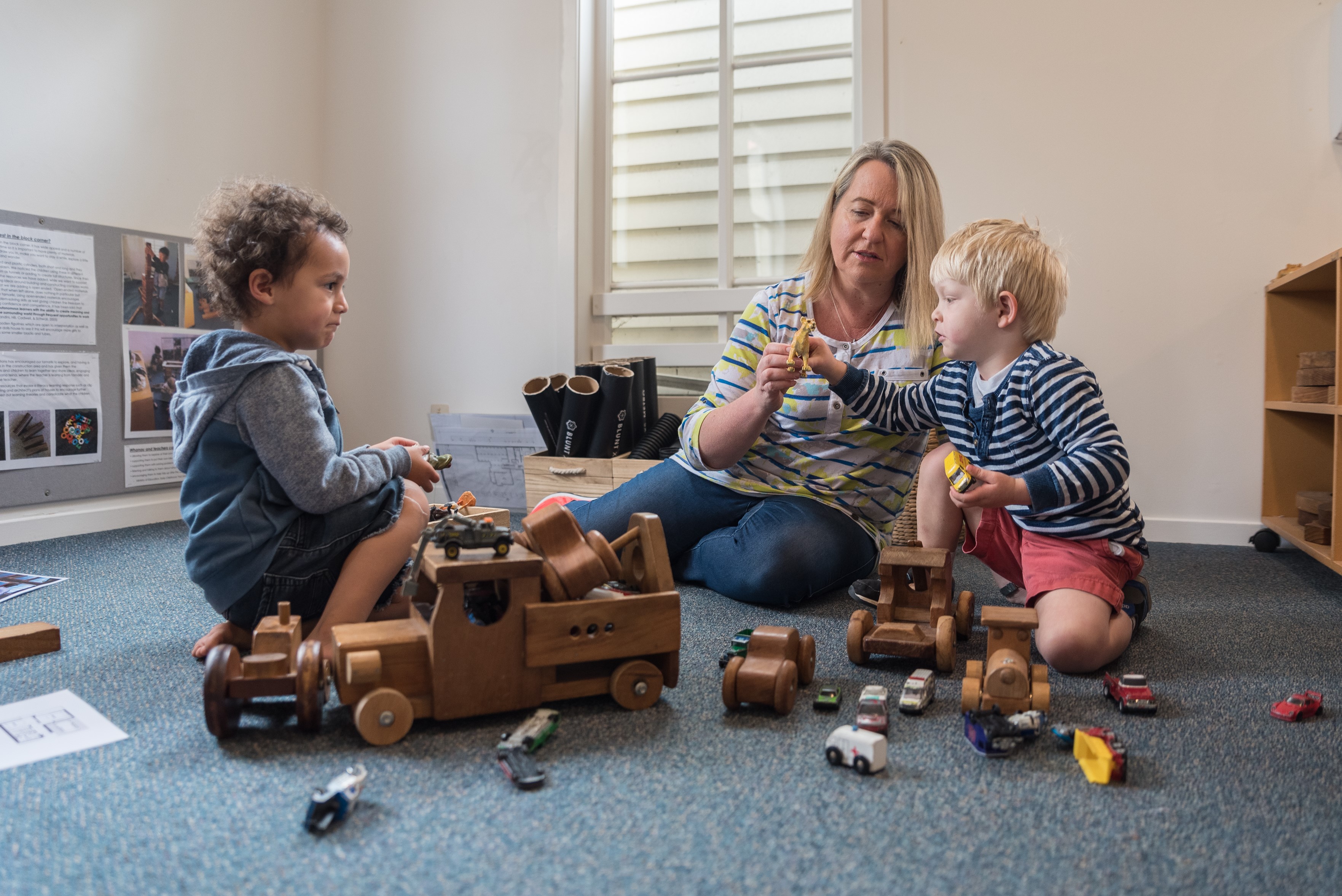Let’s be honest, the word ‘play’ is not the first to come to mind when it comes to education. Patience, diligence, listening, hard-work, following instructions — sure thing. Play? Not so much. And yet, child-directed play is widely considered to be the most important part of learning in the early years. There is a lot more to it than one might think, and the first part in understanding its benefits is knowing what play actually is.
Defining play
Whether a behaviour can be described as play isn’t really about what the person is doing, but rather why they’re doing it and how they’re approaching it. The definition is in the difference between a decorator painting a dry wall because they were paid to and a child surprising mum and dad with a painting of a robot-unicorn over the newly done living room wall. It’s night and day.
Doing the hard work for us, Dr. Peter Gray summarising the characteristics of play as such:
- Play is self-chosen and self-directed
- Play is intrinsically motivated
- Play is imaginative
- Play has flexible rules that participants control
- Play involves active and alert participation, but is relatively free from external stress and pressure
Why we love it
Play is essential for developing social and emotional skills. It allows children to practice interacting with one another, to talk, cooperate, argue, create conflict and come to agreements, all in a safe context. They get to repeatedly experience the joys and frustration, both little and big, that come from working with someone else, and they have to work on managing these feelings in a way that will allow their play to continue. It can be a wonderfully difficult, practical problem to solve, and it’s only one of many that play has on offer.
The child directed part means that the children get to create the context for themselves. It’s up to them to decide what it is that they will be doing. They own it and can add, change and edit as much as they please. Figuring out what to do is a creative undertaking in itself, and the less purpose there is to the ‘toys’ involved, the more of a challenge it will be. That’s why we love open-ended resources, things that aren’t really anything until you decide they are. Blocks, bricks, tyres, crates, stones, shells, sticks, string, glue, paper, cardboard, markers, paint — with enough time and freedom to explore, the possible uses are endless. And when you have two or three children coming up with the ideas, you can be sure those will never run out.
Learning to learn
Now, we all know how fleeting human attention can be, nodding away in a meeting while running through our shopping list. So, how impressive is it for a child to work for the better part of an hour at the glue gun table, creating, testing, then tirelessly fixing something that they either came up with on their own or saw a friend make and had to figure out how to make for themselves?
Children engage in play fully. Their attention span gets stretched and exercised, allowing it to grow. And it’s not because they’re getting praised for it or because of visual/aural stimulation that comes from games and media, but because of the intrinsic reward from the process. Whether they’re painting, drawing, building a tower, or telling an exciting story of good and bad guys as they negotiate through who the bad guy is, the drive to do it comes from them.
They’re following their interests, exploring things in far more depth with nothing else driving them but themselves. The interest may not be a ‘serious’ one, like writing or arithmetic, but that’s not where the value sits. By following their interests, they grow confident in themselves and their ability to achieve and to figure things out. They grow more and more capable in learning new things which one day may indeed be something more serious, like mechatronics, criminal law or producing grammy award winning music with their sibling out of a bedroom in their parents’ home.
What can adults do?
While play holds incredible value on its own merit, adult support can do a lot in helping to extend the learning that happens within it. From creating a stimulating, open-ended environment to building reciprocal relationships that help us guide children’s social problem-solving in ways best suited to their individuality, there are so many things that an adult can do to help maintain a learning experience or nudge it a step further.
We are currently working on an article that talks about how Little Treehouse teachers support children within their play. Keep an eye on our newsletter — it won’t be far away.

